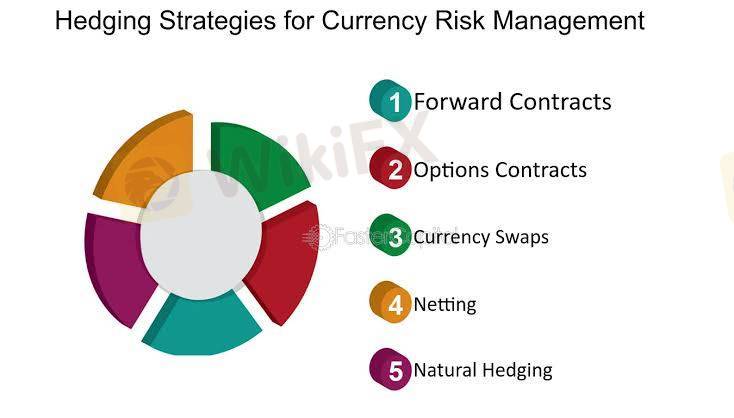
2025-02-12 16:47
ОтраслевойCurrency Risk Management
#firstdealoftheneeyearastylz
Currency risk management refers to the practices and strategies used to mitigate the risks associated with fluctuations in currency exchange rates. Here's an overview:
Types of Currency Risk:
1. Transaction risk: risk of exchange rate fluctuations affecting the value of future cash flows.
2. Translation risk: risk of exchange rate fluctuations affecting the value of assets and liabilities.
3. Economic risk: risk of exchange rate fluctuations affecting the competitiveness of a company.
Currency Risk Management Strategies:
1. Hedging: using derivatives, such as forward contracts, options, and swaps, to lock in exchange rates.
2. Currency diversification: diversifying investments and revenues across multiple currencies.
3. Currency matching: matching assets and liabilities in the same currency.
4. Currency overlay: using a separate currency overlay strategy to manage currency risk.
5. Natural hedging: using business operations to naturally hedge currency risk.
Currency Risk Management Tools:
1. Forward contracts: binding agreements to buy or sell currency at a set rate.
2. Options: contracts giving the holder the right to buy or sell currency at a set rate.
3. Swaps: agreements to exchange cash flows in different currencies.
4. Futures: standardized contracts to buy or sell currency at a set rate.
5. Currency options and futures exchanges.
Best Practices for Currency Risk Management:
1. Identify and assess currency risk exposure.
2. Develop a currency risk management strategy.
3. Monitor and adjust the strategy as needed.
4. Use a combination of risk management tools.
5. Continuously review and improve the risk management process.
By implementing effective currency risk management strategies, companies can reduce their exposure to currency fluctuations and protect their financial performance.
Нравится 0

Odogwu920
Mga brokers
Популярные обсуждения
Технический показатель
Розыгрыш Xiaomi Redmi Note 9 и 20-и VIP-подписок
Технический показатель
ВЫСКАЗЫВАНИЯ БАЙДЕНА ДАВЯТ НА ВАЛЮТЫ РАЗВИВАЮЩИХСЯ СТРАН
Технический показатель
Европа заключила совместный контракт на поставку ремдесивира для лечения COVID-19...
Технический показатель
Индия: Решение Резерв. Банка Индии по проц. ставке, 4%, ожидалось 4%...
Анализ котировок
Китай: Индекс деловой актив. в сф. услуг Caixin PMI, Сентябрь, 54,8 п.
Технический показатель
События предстоящего дня: "АЛРОСА" опубликует результаты продаж за сентябрь...
Классификация рынка

Платфоома

Выставка

Агент

Вакансии

EA

Отраслевой

Котировки

Показатель
Currency Risk Management
 Гонконг | 2025-02-12 16:47
Гонконг | 2025-02-12 16:47#firstdealoftheneeyearastylz
Currency risk management refers to the practices and strategies used to mitigate the risks associated with fluctuations in currency exchange rates. Here's an overview:
Types of Currency Risk:
1. Transaction risk: risk of exchange rate fluctuations affecting the value of future cash flows.
2. Translation risk: risk of exchange rate fluctuations affecting the value of assets and liabilities.
3. Economic risk: risk of exchange rate fluctuations affecting the competitiveness of a company.
Currency Risk Management Strategies:
1. Hedging: using derivatives, such as forward contracts, options, and swaps, to lock in exchange rates.
2. Currency diversification: diversifying investments and revenues across multiple currencies.
3. Currency matching: matching assets and liabilities in the same currency.
4. Currency overlay: using a separate currency overlay strategy to manage currency risk.
5. Natural hedging: using business operations to naturally hedge currency risk.
Currency Risk Management Tools:
1. Forward contracts: binding agreements to buy or sell currency at a set rate.
2. Options: contracts giving the holder the right to buy or sell currency at a set rate.
3. Swaps: agreements to exchange cash flows in different currencies.
4. Futures: standardized contracts to buy or sell currency at a set rate.
5. Currency options and futures exchanges.
Best Practices for Currency Risk Management:
1. Identify and assess currency risk exposure.
2. Develop a currency risk management strategy.
3. Monitor and adjust the strategy as needed.
4. Use a combination of risk management tools.
5. Continuously review and improve the risk management process.
By implementing effective currency risk management strategies, companies can reduce their exposure to currency fluctuations and protect their financial performance.
Нравится 0
Я тоже хочу высказать замечания.
Задать вопрос
0Комментарии

Пока нет комментариев, оставьте комментарий первым

Задать вопрос
Пока нет комментариев, оставьте комментарий первым